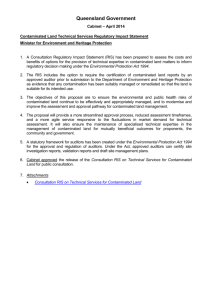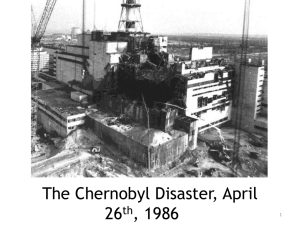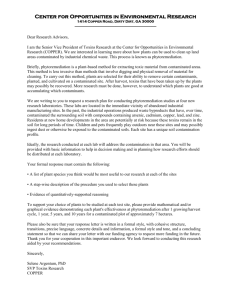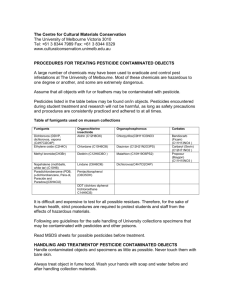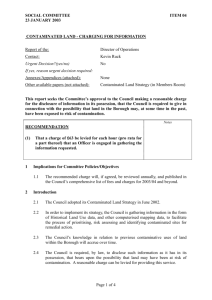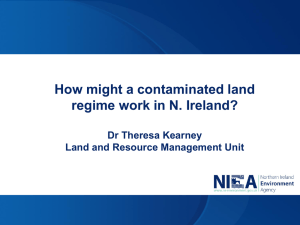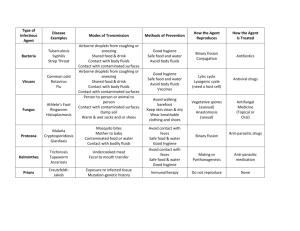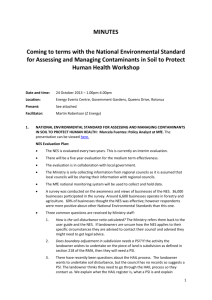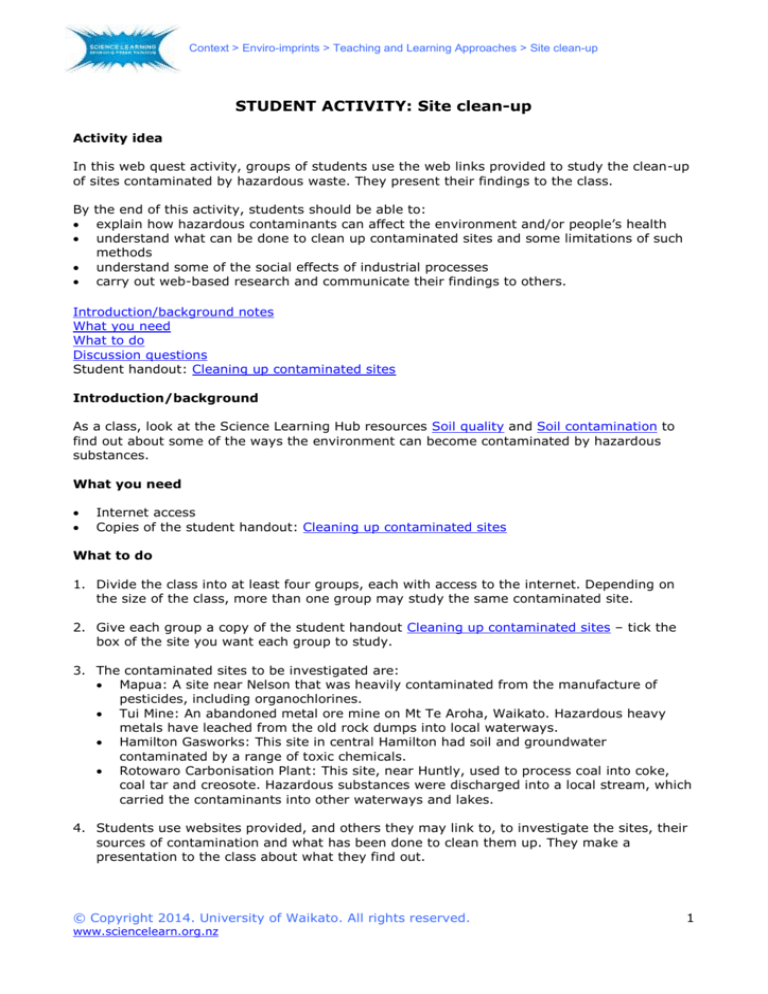
Context > Enviro-imprints > Teaching and Learning Approaches > Site clean-up
STUDENT ACTIVITY: Site clean-up
Activity idea
In this web quest activity, groups of students use the web links provided to study the clean-up
of sites contaminated by hazardous waste. They present their findings to the class.
By the end of this activity, students should be able to:
explain how hazardous contaminants can affect the environment and/or people’s health
understand what can be done to clean up contaminated sites and some limitations of such
methods
understand some of the social effects of industrial processes
carry out web-based research and communicate their findings to others.
Introduction/background notes
What you need
What to do
Discussion questions
Student handout: Cleaning up contaminated sites
Introduction/background
As a class, look at the Science Learning Hub resources Soil quality and Soil contamination to
find out about some of the ways the environment can become contaminated by hazardous
substances.
What you need
Internet access
Copies of the student handout: Cleaning up contaminated sites
What to do
1. Divide the class into at least four groups, each with access to the internet. Depending on
the size of the class, more than one group may study the same contaminated site.
2. Give each group a copy of the student handout Cleaning up contaminated sites – tick the
box of the site you want each group to study.
3. The contaminated sites to be investigated are:
Mapua: A site near Nelson that was heavily contaminated from the manufacture of
pesticides, including organochlorines.
Tui Mine: An abandoned metal ore mine on Mt Te Aroha, Waikato. Hazardous heavy
metals have leached from the old rock dumps into local waterways.
Hamilton Gasworks: This site in central Hamilton had soil and groundwater
contaminated by a range of toxic chemicals.
Rotowaro Carbonisation Plant: This site, near Huntly, used to process coal into coke,
coal tar and creosote. Hazardous substances were discharged into a local stream, which
carried the contaminants into other waterways and lakes.
4. Students use websites provided, and others they may link to, to investigate the sites, their
sources of contamination and what has been done to clean them up. They make a
presentation to the class about what they find out.
© Copyright 2014. University of Waikato. All rights reserved.
www.sciencelearn.org.nz
1
Context > Enviro-imprints > Teaching and Learning Approaches > Site clean-up
5. You could create other groups to investigate contaminated sites in your local area and what
is being done or has already been done to clean them up. If you do this, add them to the
list of sites on the student handout.
Discussion questions
Why do you think it is important to clean up a site if people are to be living on it?
How do they know that the site is clean afterwards?
How do they make sure that they are not just spreading the contamination as they clean it
up?
Does the clean-up create other environmental hazards?
How could we avoid creating such contaminated sites in the future?
© Copyright 2014. University of Waikato. All rights reserved.
www.sciencelearn.org.nz
2
Context > Enviro-imprints > Teaching and Learning Approaches > Site clean-up
Student handout: Cleaning up contaminated sites
Industrial processes can sometimes produce waste that is toxic to humans and the
environment. In the past, people did not always realise how hazardous this waste could be so
they did not dispose of it safely. A number of industrial sites in New Zealand became
contaminated, and even though they are no longer operating, they can still cause problems.
As a team, study a contaminated site and how it has been cleaned up. Present what you find
out to the rest of the class.
The site for you to study is the one below with a tick in its box. Start at the website given, but
this may take you to others with more information.
Use these questions to help with your research and presentation, but you will think of others.
What is the contaminant that is being cleaned up on this site?
How did the site come to be contaminated?
What are people doing to clean it up?
What are the possible effects of this contaminant to the environment and/or people’s
health?
Are there limits to how well the site can be cleaned up? If so, what are they?
Could this contaminant spread to other areas? If so, how?
Mapua
www.mfe.govt.nz/issues/managing-environmental-risks/remediation/mapua.html
Tui Mine
www.mfe.govt.nz/issues/managing-environmental-risks/remediation/tui.html
Hamilton Gasworks
www.waikatoregion.govt.nz/Services/Regional-services/Waste-hazardous-substances-andcontaminated-sites/Contaminated-sites/Hamilton-Gasworks
Rotowaro Carbonisation Plant
www.waikatoregion.govt.nz/Services/Regional-services/Waste-hazardous-substances-andcontaminated-sites/Contaminated-sites/Rotowaro-carbonisation-plant
General information
www.waikatoregion.govt.nz/Services/Regional-services/Waste-hazardous-substances-andcontaminated-sites/Contaminated-sites/Managing-contaminated-sites
www.mfe.govt.nz/issues/managing-environmental-risks/contaminated-land/index.html
Information on organochlorines
www.sciencelearn.org.nz/Contexts/Enviro-imprints/Looking-Closer/Organochlorines
© Copyright 2014. University of Waikato. All rights reserved.
www.sciencelearn.org.nz
3

